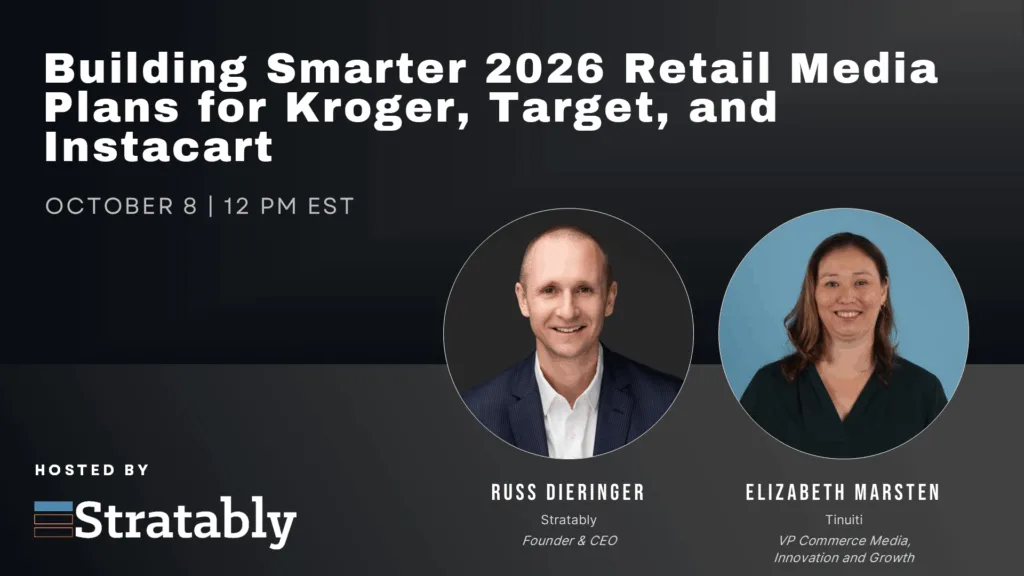September 27, 2023
Stratably hosted Kelsey Scarzello from Momentum Commerce to share why competitive analysis is important on Amazon and how it differs from what brands might be accustomed to in-store.
Key topics:
- The importance of competitive analyses on Amazon
- Unique aspects inherent to Amazon
- Where to focus
- Case studies
Watch The Recording Here
Action items for brands:
- Use ad density changes Y/Y to make the case for appropriate Amazon ad spend increases
- Implement a competitive analysis process at least quarterly (for concentrated categories) or as frequently as monthly (for fragmented categories).
- Sales, organic and paid share of voice, pricing elasticity, ad density, market concentration, and competitor activity should all be taken into account to form a view of a category
- “Walk the store” Education: Search relevant terms and see which competitors are on Amazon compared to what you find in store; take in-store photos and lay side by side to educate colleagues
Here’s what we found most interesting:
- SERP is window into competition: Amazon’s SERP is analogous to a store aisle or shelf when it comes to what brands are competing with each other. Understanding organic and paid share of voice on each “shelf” is thus critical to understanding the competition. This means having a sales/share/shelf analytics provider is essentially critical to running a business on Amazon.
- Ad density metric: Understanding how Amazon ad density has changed Y/Y can be a helpful input in making the internal case for more funding. Density below 35% is considered low, 35-45% is about average, and anything north of 45% is considered heavy ad load.
- Concentration: More fragmented categories are easier to break into as there is more opportunity to pursue longer-tail, less expensive keywords. Brands in these categories will tend to pay attention to shorter term changes in the competitive data as the category dynamics are more volatile.
- Pricing immediately impacts rank: Price changes on Amazon nearly immediately impact ranking on the SERP. This is unlike a store where a price change will not impact placement on the shelf or even inside the store (at least immediately). Thus, using coupons and discounts to influence price can be a useful strategy for maintaining or growing ranking if Amazon changes the price of an item.
- Rate of change and durability matters: Identify which brands are small but growing rapidly and how they are doing it. Are they winning from advertising, pricing, branded search and how durable is their increasing position? Answering these questions can help brands better compete with evolving SERPs, such as identifying conquesting opportunities as discussed during the session.



